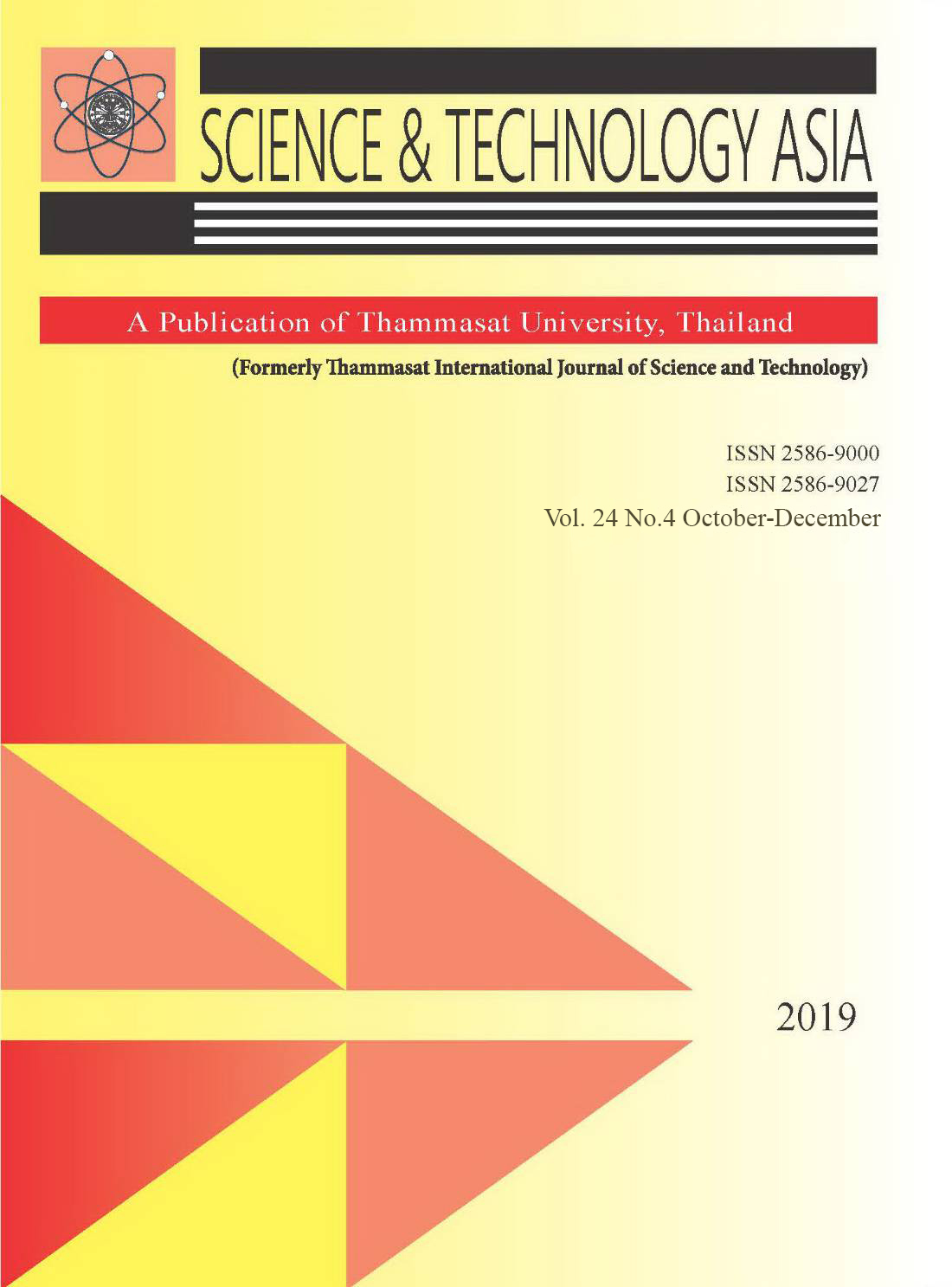A Survey in Bacteriological Quality of Traditional Dried Seafood Products Distributed in Chon Buri, Thailand
Keywords:
Dried seafood product, Viable bacteria, Halophilic and halotolerant bacteria, Water activity, Chon BuriAbstract
This study aimed to assess physicochemical and bacteriological qualities of dried seafood products distributed in Chon Buri province, Thailand. Forty-four dried seafood samples were collected from local markets and examined for pH, water activity (aw), salt content, numbers of viable bacteria and halophilic and halotolerant bacteria, numbers of Escherichia coli and Staphylococcus aureus and the presence of Salmonella, Vibrio parahaemolyticus and Vibrio cholerae using a standard protocol. Values of pH, aw and salt content in dried seafood products were 5.16 ± 0.04 – 8.63 ± 0.03, 0.221 ± 0.01 – 0.822 ± 0.02 and 0.28 ± 0.03 – 18.92 ± 0.10%, respectively. Numbers of viable bacteria, and halophilic and halotolerant bacteria were 102 – 109 and 102 – 109 CFU g-1, respectively. Main compositions of total viable bacteria, and halophilic and halotolerant bacteria in dried seafood products were Staphylococcus, Bacillus and Pantoae. Based on regulatory standards for cooked ready-to-eat and prepared seafood products set by the Department of Fisheries, Thailand, nineteen (43.18%) samples contained viable bacteria numbers exceeding the allowable limit. Two dried shrimp products (4.55%) harbored E. coli over a regulatory acceptable value of 10 MPN g-1. All dried seafood products had S. aureus numbers within allowable limit for good quality of processed seafood products. None of Salmonella, V. parahaemolyticus and V. cholerae was isolated from all dried seafood products. This study indicates that consumption of cooked ready-to-eat and prepared dried seafood products may constitute a potential hazard of foodborne infection.








